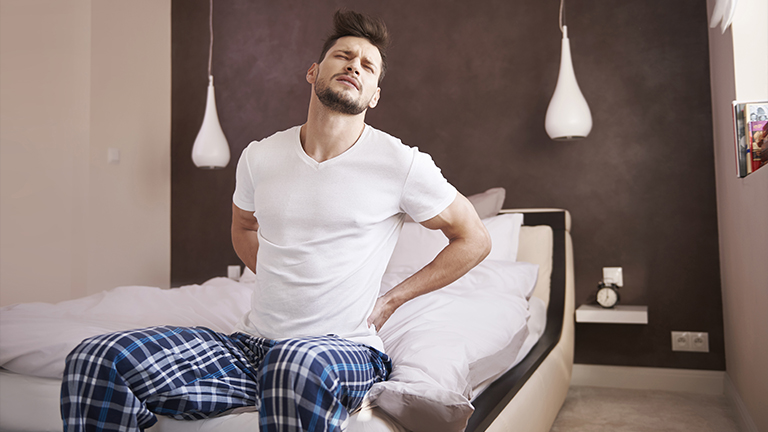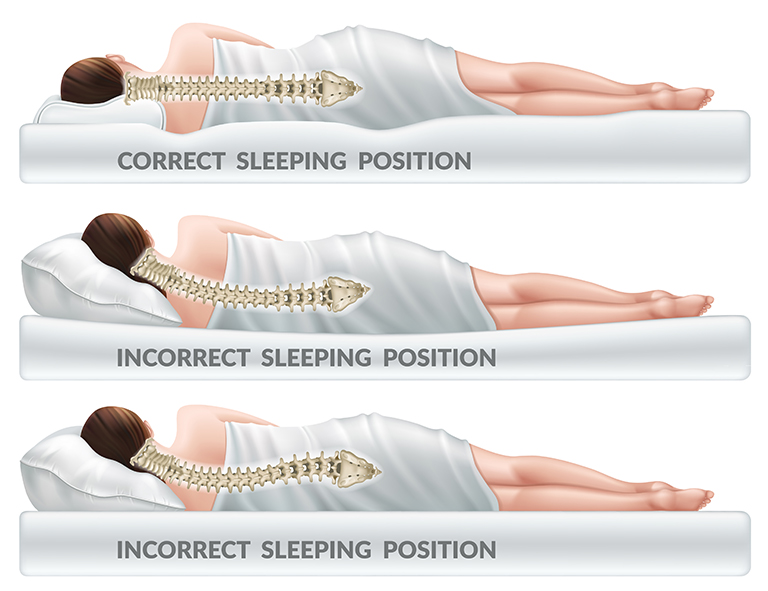Lower back pain is one of the most common health issues faced by people in the USA, UK, Canada, and worldwide. According to medical studies, poor sleeping positions can worsen spinal pressure, increase discomfort, and prevent deep restorative sleep. Choosing the best sleep position for lower back pain relief not only helps reduce stiffness but also improves posture, circulation, and overall spinal health.
In this article, we will explore the top sleeping positions, tips, and expert recommendations to help you wake up pain-free.
Why Sleep Position Matters for Lower Back Pain
The way you sleep directly affects your spine alignment. When your body is not properly supported, it can strain the lower back muscles, joints, and discs. The wrong position may lead to:
- Increased muscle tension
- Poor spinal alignment
- Morning stiffness and discomfort
- Interrupted sleep cycles
Correct sleep posture helps maintain the natural curve of the spine, reduces pressure on the lower back, and allows the body to heal overnight.
Best Sleep Positions for Lower Back Pain Relief
1. Sleeping on Your Back with a Pillow Under Knees
- Keeps the spine neutral
- Reduces stress on lower back
- Improves blood circulation
Tip: Use a supportive memory foam pillow under your knees to maintain natural spinal alignment.
2. Side Sleeping with a Pillow Between the Knees
- Prevents pelvis from twisting
- Reduces pressure on hips and spine
- Keeps spine aligned naturally
Tip: Choose a medium-firm mattress for added support.
3. Fetal Position (Curled on Side)
- Opens up space between vertebrae
- Reduces herniated disc discomfort
Tip: Keep knees gently tucked and avoid curling too tightly.
4. Sleeping on Your Stomach with a Thin Pillow
- Not usually recommended but can reduce pressure for some people
- Place a thin pillow under hips to prevent spinal strain
Tip: Avoid thick head pillows to prevent neck pain.
5. Reclined Sleeping Position
- Ideal for people with isthmic spondylolisthesis or chronic lower back pain
- Reduces stress by supporting the spine at an angle
Tip: Use an adjustable bed or wedge pillow for maximum support.
Additional Tips for Pain-Free Sleep
- Choose the Right Mattress – Medium-firm mattresses are proven to reduce back pain.
- Use Proper Pillows – Support your head, neck, and legs to maintain spinal balance.
- Stretch Before Bed – Light yoga or stretches improve flexibility and reduce muscle tightness.
- Maintain Healthy Sleep Hygiene – Stick to a schedule, reduce screen time, and keep your bedroom comfortable.
- Avoid Long Stomach Sleeping – It twists the spine and causes strain.
Global Relevance of Sleep Positions for Back Pain
Whether in the USA, UK, Canada, or anywhere globally, millions struggle with lower back pain caused by poor posture, sedentary lifestyle, or stress. Adopting the right sleep position is a cost-free, natural solution that can significantly improve quality of life.
When to Seek Medical Help
If lower back pain persists despite trying different sleep positions, consult a healthcare professional. Chronic pain could be linked to herniated discs, arthritis, or sciatica, which may require additional treatment.
Conclusion
Finding the best sleep position for lower back pain relief can transform your sleep quality and overall health. Sleeping on your back with a pillow under your knees or on your side with a pillow between your legs are the most recommended positions. Along with a supportive mattress and pillow, these small adjustments can make a big difference in relieving pain and ensuring restful sleep.
→ For a visual guide on the Best Sleep Position for Lower Back Pain Relief, check out the following video:


